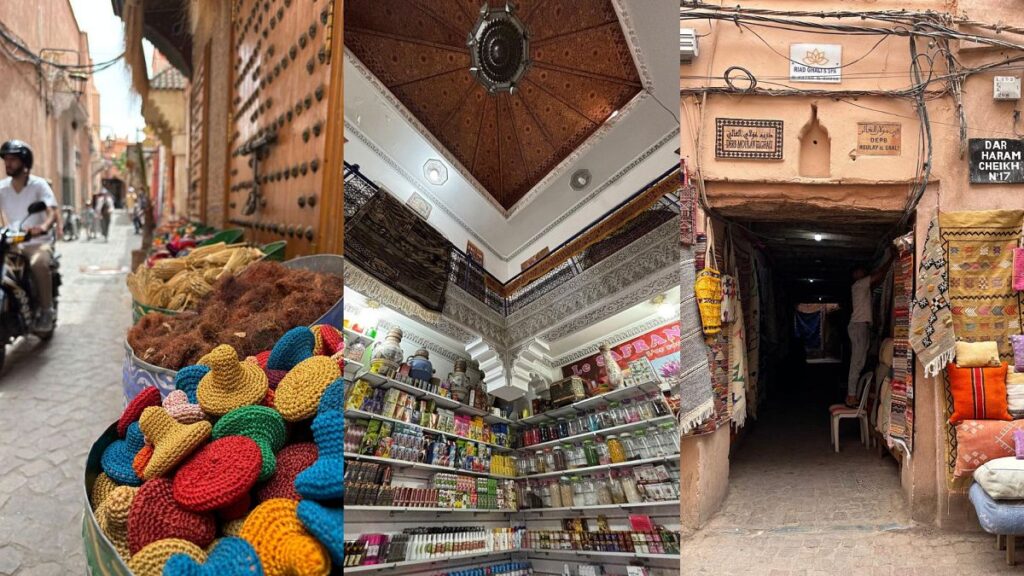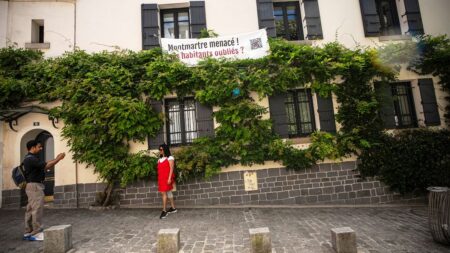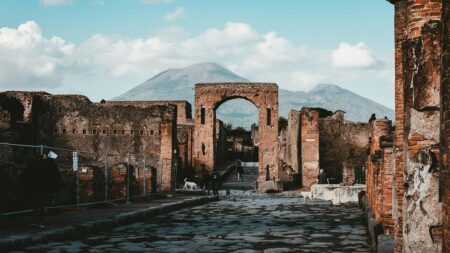Wafa, dressed in a clinical white coat and framed by myriad bottles and jars, is explaining the painstaking method of squeezing out argan oil.
The technique is time-honoured in Morocco, and in this cooperative in the heart of Marrakech, it’s all done by women.
She shows me the nut from the argan tree that must be peeled by hand to retrieve the kernel, while another woman sits on a patterned bench and demonstrates the hand-worked press to extract the oil.
The argan oil cooperative, housed in a blue and white tiled ex-riad, is one of several organisations in the city set up to support women in need, particularly those widowed, disabled or suffering economic hardship.
Other cooperatives are dedicated to carpet weaving and catering.
Marrakech’s enduring, age-old traditions are the soul of the city, inspiring generations of international creatives from fashion designer Yves Saint Laurent to interior designer Bill Willis. Here’s how to seek them out on your next trip to the Red City.
Discover Marrakech’s women’s craft cooperatives
Wafa is a born comedian. She advises her female visitors that if they want glowing skin, they should leave their husbands – or else use cactus oil.
For snoring partners, she gestures significantly to a cushion, before offering the less drastic remedy of nigella seeds and menthol herbs.
These, along with orange blossom oil, rose oil, black exfoliating soap and a range of spices, are all produced by the women the cooperative supports.
Argan oil is their most renowned product, however. This liquid gold was once extracted by Berber women in the deserts for medicinal and culinary use.
Now, the cooperative incorporates it into hair oils, face creams and soaps. They’re not cheap to buy, but it’s easy to see why when you learn about the time-consuming, skilled labour behind every drop.
Nearby is the carpet cooperative Palais Saardien. The giant artworks of weaving can likewise take months to produce.
There are vivid Arabic-style carpets with complex patterns, or the rougher Berber style incorporating three techniques – weaving, knotting and embroidery – giving them a pleasant, varied feel underfoot.
If the shopping makes you peckish, head to women’s cooperative Amal for a taste of soulful home cooking like fish tagine or the special Friday couscous. Here, women are trained for cooking in a professional setting, and are also offered French classes.
Fire dancing, spice workshops and Moroccan feasts
At Casa Memoria, a newly opened rental villa just outside the city, I’m watching a fire dancer in a bejewelled headdress masterfully manage the blustery wind as she performs.
Elegant and sensual, she moves rhythmically to a keyboard and percussion playing reinvented traditional Moroccan beats.
Fire dancing – or rather performing dances around a fire – was a practice of tribes in areas like the nearby Atlas Mountains.
Although what I am watching is clearly much evolved for the benefit of tourism, in its essence it recalls those female dancers who kept tempo to the beat of the tribesmen’s drums.
The team at Casa Memoria can also arrange market visits and spice workshops for guests of the six-room villa. Events are held outside on the vast lawns studded by olive trees and beneath the ochre portico.
At sister property Sirayane, just down the road, guests can make use of the spa. It offers the traditional hammam treatment, where you are scrubbed with black soap made from crushed olives for ultra-soft skin.
Back at Casa Memoria, guests can indulge in dinner feasts of Moroccan dishes like zaalouk salad with aubergine and tomato, sweet almond and chicken pastilla pie and Moroccan crepes with candied fruits.
They are held in the pistachio-hued dining room which, like the rest of the Bill Willis- and Moroccan architect Charles Boccara-designed property, is a tour de force of extravagant, whimsical Moroccan-inspired interior design.
Like the city itself, at Casa Memoria tradition (or memory) – from souk-sourced furniture to a hamman-style bathroom – reverberates throughout.
Read the full article here

















